How do you plan for a record-breaking year in business?
Scott walks listeners through the first of a two-part series on how to prepare for a highly successful 2025.
He breaks down the process of reviewing and reflecting on the current year to set the right goals and direction for the future.
Scott highlights key questions to ask your team, the importance of evaluating every department, and how to align your growth goals with a rolling five-year plan.
WHAT TO LISTEN FOR
03:49 Key questions to ask for business reflection
10:05 Leadership evaluation: Transparency and ego-checks
17:01 Performing a SWOT analysis for 2025 planning
22:16 Prioritizing initiatives: What should you focus on?
Leave a rating for this podcast with one click
CONNECT WITH US
Website | You Tube | Facebook | X | LinkedIn | Instagram
Follow so you never miss a NEW episode! Leave us an honest rating and review on Apple or Spotify.
Episode Transcript
Announcer (00:03):
This is the Self- Storage Podcast with the original self- storage expert, Scott Meyers.
Scott Meyers (00:11):
Hello everyone and welcome back to the Self- Storage Podcast. I’m your host, Scott Meyers, and today we’re going to do episode one of the two-part series on how to prepare for and plan for 2025. So we’re going to go through how to create your 2025 annual business plan and more focused on the one pager that we all talk about. And if you haven’t created a one pager, well then stay tuned for part two because we will get into the details of that. But what I wanted to do in this episode is an exercise that I’d like to go through every year, which is really focused on reflecting on this past year, at least three quarters. Now, we’re recording this in October as we’re preparing for 2025, and I want to do a little bit of business evaluation and take a look at the departments as well as our overall numbers to determine where we’ve come, where we are sitting right now, and before we begin to put the numbers down and setting the hard goals and the budgets for 2025.
(01:05):
For me, I think that’s more of the easier part, but understanding what the direction is and really taking a step back and going back out, zooming back out to 30,000 feet to understand some of the bigger pieces to the business and some of the whys behind it. I think it’s imperative that you go through this exercise and do this first. And so that’s what we’re going to do. We’re going to spend some time today. I’m going to show you how to properly reflect on your business and evaluate where it is right now so that you can accurately plan for 2025. And we’re going to do this in a two-part series so that you have time to be able to do this before we jump into the numbers. So if you were with us on the last episode, we were talking about one of the ways in which we found a lot of success in 2024 was through our Investor meetups where we bring our passive investors out to the sites to be able to see what we’re working on, what they’re investing in so they can see it, touch it, feel it, they can meet with the syndicators, the operators, those of us, the boots on the ground, the jockeys if you will, and be able to meet the team that’s then going to take it the rest of the way home and stabilize and optimize these properties.
(02:09):
And so if you miss that, you definitely want to go back and listen to it. And if you also want to see what types of properties and projects that we are investing in passively, then go to passive storage investing.com. And if you want to reverse engineer what we’re doing on the passive investor meetups or if you want to come join us, then go to passive investor meetup.com, passive investor meetup.com as we are heading to Orlando November the 13th where you can meet the team and we will be sharing some of our upcoming projects that are available to invest in. But back to today’s exercise, and that is looking back on the business and what you’ve accomplished and where you’re sitting in the current year. So what I’d like to do is I’m going to give you a set of questions that we ask ourselves and that we ask the team as a team, and it allows us to be able to celebrate our successes and understand and get a better understanding of did we really plan properly for 2024?
(03:05):
Where did we miss the mark? Were there somethings really important last year in October that we’re planning that all of a sudden a month later, seven months later, they really weren’t that important and that’s why they weren’t achieved? Or did we just really miss the boat? But it is going through this exercise that makes us very, very clear so that there aren’t things that just carry forward to the following year if they really weren’t important. So it’s a good understanding, a good self-awareness of the business and just a crucial, in my opinion, a crucial exercise to go through. I say this is something you should go through every year, and I would recommend even going through, it’s a midyear as well, just to make sure that everybody’s aligned and on the right track. So we have a spreadsheet that is shared with the team that we go through and ask the questions and then we share the information when we come together.
(03:49):
So the first question that we ask as we begin to have this discussion is, what did you achieve this year? I think it’s very important that we look at as a company what we achieved as well as the individuals, our C-suite, the corporate staff, those that are guiding and directing the company, what did they personally achieve in their department? What are the KPIs that they met where they responsible for specifically? And then as a company, what is it that we achieve? That way we can celebrate where we’re at right now. And also it’s just a great way to be able to set the mood and set the tone as we head into the planning for next year. So the next question after that then is where did you fall short? So not did you fail, there are no failures, but where did you fall short?
(04:32):
And again, that is stated as a company and that is also stated individually so that we can understand exactly what happened here in some of these areas that we didn’t see success from what we set out to achieve last year. The next question is, what percent do you want to grow next year and does that number support your long-term goal? So we said we really don’t go out too much further than five years. I found that a five-year plan is sufficient anytime that we go beyond five years. If I look back in the times that I’ve done that throughout my career, it seems like we’re in maybe not a completely different spot, but planning beyond five years. I think it’s an exercise in futility. We just don’t. We seem to change direction and we’re being led in different directions or starting on different businesses in different markets or areas that we really didn’t weren’t even on our radar five years ago.
(05:26):
So I think five years is about the maximum, but it is a rolling five-year goal as you’re setting your growth projections for next year and the percentage that you want to grow. Well, does that roll up to the five-year plan? It doesn’t mean that it needs to be one fifth or 20% of that, it just means that we’re on our trajectory that hopefully should support your five-year goals. And if not, why is that? And do we really need to move the bar with regards to our five-year goal, move it forward or move it back? Next is where do we want to grow? And again, we answer this as a company and as individuals, we need to take a step back and we really need to focus on our culture. We’ve neglected that. Is this an area that we really want to grow in this year or is it into a different market?
(06:11):
It doesn’t always have to be the numbers or growth for the sake of growth, but are we growing internally? How about the individuals that are in the room that are setting the course for next year? Where do they want to grow? Did they want to grow into a different position? Do they just want to up their skillset? Does our CFO need to get some schooling, go follow other CFOs and organizations like ours or work with a consultant or a fractional CFO in the meantime to make sure that we’ve got all our KPIs in place with regards to the CFO role and position and the things that we need to keep an eye on? What are those areas? Where are those areas in which we want to grow, that we want to focus on for next year? And then we do an exercise which is more of a kind of a spit balling or we have the whiteboard out when we’re doing all of this almost every single time because we’re moving things around, we’re racing and aligning, and it does all come together, but here’s the time.
(07:03):
Here’s the area where we clear the board off or we start a new section and we just do a brain dump of all the opportunities that we see on the horizon for next year. So where do we see that we can grow? What do we see as opportunities that we could take advantage of that allow us to be able to grow? Where are those opportunities to grow individually and as a business? And this is where we begin to look at some of the numbers of the opportunities, some things that maybe as the market changes that now we’re going to shift our focus back towards that development that we see that we have more capital that is coming into our organization than we have deals. And so we really see an opportunity to bring on another person in acquisitions department. Do we look to do more joint ventures?
(07:42):
How do we leverage our education company to be able to supply more opportunities for the investment company? And how do we take our mastermind to the next level and draw more people in that allow us to grow in all of these areas with key relationships and truly seek out people that grow our mastermind in particular areas specifically so that the entire group of all approaching a hundred people now is as, as it can possibly be by having absolutely the best of the best in the room. So this is the place where we get to dream a little bit and look at the opportunities that are in front of us that we should as a company be taking advantage of. So next we’re going to do a deep dive and evaluate the various departments in our business. And so we’re going to write out the departments going down in a column on the left hand side about the whiteboard or of a sheet of paper.
(08:30):
And then we’re going to rate them. We’re going to give them a one through five rating, and then we’re going to give the reason for that rating. And so we get to do this individually. So we’ll do it individually first because there’s a lot of things that come out when an individual states where they feel this department sits because it affects their position differently or they’re in this department and they’re going to answer it and rate it a little bit differently and the reasons. And so this is a great exercise to understand and uncover some of our shortfalls or maybe some of the lack of self-awareness, which sometimes comes out in this exercise. But it is all an opportunity for growth and it is all done out of peace and love. So the first department is leadership, and that falls on me. So I’m always curious to see how that is answered.
(09:12):
And I am one for complete transparency and complete honesty and open communication. We check our egos at the door, and there’s no way that a business can succeed if the leaders are full of themselves and are running from an egotistical and a prideful standpoint. I haven’t seen too many companies that are very successful when the leader is operating from a place of feeding their ego or from a prideful hubris standpoint, they usually don’t last very long or they’re at the very least, they’re not very healthy, and the employees or staff does a stay very long. And so I learned very early on, in order for our business to succeed, I have to check my ego at the door, and I constantly check myself with that as well. So we use traction. So Gina Wickman wrote the book Traction and we use EOS, the entrepreneur operating system that he launched within this book in this movement.
(10:05):
And this is how we operate our meetings, our weekly meetings, our Level 10 meetings, our Vision Traction Organizer, which is our one page plan, which we will be going over in episode two of this two part series. And what this has allowed us to do, and part of the system is to constantly have multiple check-in points and multiple ways to keep ourselves accountable. And so myself as a leader, he has a fantastic tool in which we get to go in and rate as many times as you’d like anonymously, send out a poll, a survey, if you will, of the various staff. You can choose your entire company or key leaders of departments and ask them how are we doing it in these certain areas? And it really points back to the organization, but also me as a leader. And so I think it’s very important to, once again, if I’m not leading well then the company’s not doing well.
(10:52):
I do this at home as well with my wife. I ask, great, how am I doing as a husband in these areas? When I take my kids out on a date, I always ask them, how am I doing in these areas and where can I improve? I am always open and wanting to improve in all areas in which I am leading someone or something. And so here is the place to do that. So from a leadership standpoint, each and every one of my staff members will rate the leadership, which either includes myself or the leadership team, and then the reason why they’re rated it as such. And we do spend a lot of time here because the leadership team is well leading the organization. And if we’ve got some challenges here and some blind spots, then we need to address them and handle ’em, and this is the time to be able to do so before we go on to the rest.
(11:34):
Next is marketing. So now we’re going to rate the marketing department and we’re going to rate ’em on a scale of one to five, one being below the basic standards, significant issues and problems not meeting the expectations. And number two, a rating of two means below average, several issues and problems, expectations partially met that needs improvement. A rating of three is defined as meeting the basic standards, minor issues of problems, and the expectations are met but not exceeded. Four rating means that we’re above average. There’s a few issues and high reliability expectations met and sometimes exceeded, and then five being the highest high standards met, no issues and excellent reliability and the expectations exceeded in all areas. And so now we’re going to rate the marketing department from one to five and then discuss the reasons why we rated it as such to once again flesh out any blind spots and celebrate our successes.
(12:29):
And then the areas in which we absolutely knocked it out of the park. Then we go right on down the list in each and every one of the departments in our organization. Next goes on. If marketing is doing well, then certainly we want to see how sales is doing. So what are we doing with our marketing and the leads that come in? Is the sales team converting on those? And that goes for both our education department as well as our investing department. So leads that are converted and it’s not always a sale, but that converted to properties that are being purchased, that also equates to our capital raising efforts and folks that are coming in that have an interest in us, how many of those folks, it’s not a sale, but how many of those folks are converted to saying, yes, I would love to be on a list of investors to have deals put in front of me.
(13:13):
We measure those as well. So there’s many KPIs within the sales department that we can measure. And overall we just want to know how we would rate the sales department. So if marketing is firing and all sale owners, how well is the sales department doing in converting those leads into sales? Next is processes and systems. And you may think, well, that’s kind of a gray area. How would you rate your company in terms of processes and systems? First of all, are you operating on a system? As I mentioned, we use the entrepreneur operating system and it’s not all encompassing, but it’s pretty darn complete. And it has a system that has a weekly cadence of meetings and how we’re supposed to handle those meetings and different areas and different functions within our company. Do we have a process? Do we have standard operating procedures and a place where all of those are housed so that anybody can go back and understand what the expectations are with regards to how to do a job or a specific function within this department or within your role of responsibilities as a staff member in our organization?
(14:14):
And that comes after years of, first of all, identifying that we need to have a process set up for this because we’ve had problems with several people doing it different ways and expectations not being met. That is the time, and that is when we need to create a process or a standard operating procedure for this. And so how well is your company doing with that? You can always tell if you’re not because there’s a few roles, jobs, tasks that have been performed that just didn’t hit the mark and didn’t roll up to the overall success and achievement of our KPIs. And so how well we handle our processes systems, it’s a little more difficult to measure, but let’s just that when you get in the room together, you’ll know. You’ll know when whether your processes and systems are running well, next is talent. Now, this isn’t a department, but this is really a function, and that really is taking a look at right people, right seats, as Jim Collins talks about in good to great right people on the bus, and are they in the right seats?
(15:12):
And so now this is the time to begin to look at around the room as well as in the organization. And if there is a lower rating, well that means that that’s something that we need to discuss. So Bob, you rated a three. Is there an individual or a department or individuals that you feel are missing the mark and that you feel may be in the wrong seat or just maybe on the wrong bus? And now is the time to begin to talk about this. And we usually do a break after processes and systems before we get into the talent discussion. And last, before we move on to our SWOT analysis, is that we will take a look at the finances and the financial department. And so this could mean anything from transparency to reporting to having accurate and timely reporting so that each and every department can operate from a place of excellence because they have the right data to be able to not only report to within their department, but that rolls up to the overall goals.
(16:12):
But also it really just means are you able to read the scoreboard? Because if you don’t what the score is, you don’t know who’s winning the game, and that’s in your department, or that means in the business as a whole. So it’s very important that the financial optics are clear and everybody understands them so that they know whether they’re winning as an individual in their department and that we’re winning as a team. And that happens first by making sure that your bookkeepers, your accountants, your CPA, and anybody that’s responsible for reporting the financials or giving you the score, that they do that with excellence and it is accurate and timely so that we can all make sure that we are making proper decisions that affect the organization. So after that, now we will move into the department evaluation with regards to a SWOT analysis. So a strengths, weaknesses, opportunities, and threats.
(17:01):
And so we will go down through each and every one of those departments, again, from a leadership, marketing, sales processes and systems, talents and finances. And now we’ll dig a little bit deeper. What is the strengths within that department? What are the weaknesses? Where are these opportunities for improvements or adding staff? And then are there any threats to them being able to do their job effectively or is there a threat to the organization overall because of what’s happening within this department? So we spend a fair amount of time of digging into the reasons. This is where we pull those reasons out, and now we do a deeper dive into those areas that are strengths, weaknesses, opportunities or threats and each and every one of those areas. And again, if this is an exercise that you’re going through as an individual, then a lot of this is going to be, yeah, your own self-awareness as a leader.
(17:46):
If you are wearing all of these hats, then what will typically come out of this exercise is, well, I got to get better in these areas, or I need to hire somebody who’s better than me in these areas because this is a huge weakness as a blind spot and it’s been here for three years and I need to now do something about it. So that’s why it’s important to go through and do the deep dive in each and every one of these areas with an eye towards, Hey, what’s good? What is a weakness? Where’s an opportunity for improvement? And then what is truly a threat because we continue to stumble over and over again. So now as we go back through, we’re going to do a deeper dive again through the SWOT analysis, and then we’re going to go by department to determine what it is that we’re going to start doing because there’s an opportunity that we’re going to stop doing because really it’s a weakness or a threat and what we’re going to continue doing and how to go forward in each and every one of those.
(18:38):
So from the leadership department, marketing, sales processes and systems, talent and finances, what are we going to start doing more of in this department? What are we going to lean into? What are some of the things that we need to stop doing that needs to either shift to a different department or we need to offload this to a third party company that is going to handle this for us? We’re going to hire out for that talent. We’re going to hire a VA or we’re going to bring in a consultant to help us to navigate through this. And then one of the things that we’re going to continue to do in each and every department, because we’re firing on all cylinders and it is up steady as she goes, as they say, and then it’s here in this meeting that we determine what is our main focus either for the year or broken down into our quarterly focus.
(19:24):
And what that’s stated in traction terms or in EOS is what are your quarterly rocks? And so we have these bigger goals that aren’t, it’s not a to do for the week or it’s not something that we can complete into. It’s a rock. That means it’s a quarterly focus. That’s something that we have set out to achieve. And so whatever that focus is, we need to define what it means to be done so that we understand that it has a stopping point or what does it look like to be done and then implemented, or is there a next step to this? And so the entire team needs to agree on what is the definition of done and what needs to happen before it can be completed. Do we need to add additional staff members? What types of resources? Is it money? Is it help from virtual assistants?
(20:04):
Whatever that may look like. What needs to happen before this can be completed? Who’s responsible for leading this focus? For instance, let’s say that we’re going to create a different marketing channel and we’re going to start to fish in a different pond for passive investors. And this involves a lot of travel heading to certain types of events or aligning ourselves with certain companies that are going to allow us to do this well, that’s a little arbitrary. And how are we going to determine when it’s done, has it been completed? And who’s going to be responsible for leading this focus? And is the person responsible for leading this focus, also the person responsible for carrying this out? And then what needs to happen after it’s completed? Is there support that comes up behind this? What happens when we begin to achieve some momentum in this area?
(20:49):
And when is the due date for the completion of this focus when it’s actually done, done and it’s just moving on and now it is part of our ecosystem and just part of the business that continues to operate? And ultimately, what will be the impact on a revenue as a result of a completing this focus, this rock for the quarter or for the year? And then we go down and choose the next focus. What is the next rock that we’re going to plan for this year and for the quarter? And how many of these big initiatives that have come out typically of the opportunity section are we going to take on and then we’re going to commit some resources and some time to achieve for the business to grow this year? And then we need to be very clear on these. And as we look at them, as they’re sitting on the whiteboard, then take a step back and say, is that too aggressive?
(21:33):
Is that too optimistic? Do we really want to take on all of these? Or is one more important than the other? Let’s stagger them. And are we okay with maybe the fourth, fifth, third, the fourth, the ninth and 10th? If those don’t actually make it as rocks, and if they’re not completed this year, what is the impact? And if it’s slight, then we should be okay if we don’t get around to those, but we achieve these others. And so we prioritize and determine which ones we’re truly going to take on and put a timeframe to those, whether they’re going to make it into the one page plan this year, or if it’s okay if they don’t and they sit in the parking lot for a little while. Either way, it’s good to be able to plan this together and strategize and make sure that everybody’s on the same page because everybody’s had input as to where we’re heading this year.
(22:16):
And then this is one that we may revisit then the next day or revisit in the level 10 just to make sure that after everybody’s exuberance wears off, after being in these meetings and feeling like we can conquer the world, is it all realistic? The more that we begin to think about it, is this too much? Do we bite off too much? I believe it’s worse because it’s demoralizing to put a whole bunch of initiatives and opportunities up on the board that we have no hopes of being able to achieve. And if we begin to go over these in our level 10 meetings and we’re not making any headway, we’re not getting any traction, pun intended, then that becomes a little bit demoralizing for the team. So we just want to make sure that we’re being very intentional and that we do have the opportunity to be able to achieve these goals rather than just a whole list just for making a list and then falling short only to be disappointed at the end of the year.
(23:02):
So if you haven’t gone through this exercise, or at least a few pieces of this, go back through and listen to this. Create the spreadsheets as long as it makes sense for you and for your team. And if you need to strip it back, if this is your first time, parrot back, I’m getting a start. And taking baby steps is better than none at all, because this is a journey in business in terms of self-awareness and the roles and responsibilities that you as a leader need to step into and what your strong suits are and where your superpowers lie. And then be able to spend as much time as possible there. And then to be able to do that for each and every one of your staff members to make sure that they still have a seat on the bus and that they’re in the right seat, and that they are utilizing their superpower, 80% of their working hours to continue to move the business forward and to feel fulfilled.
(23:46):
So take some time, whether it’s up by yourself or your team. This should be about a day, maybe a day and a half to be able to go through this exercise with your team to begin to prepare for 2025. And by the time you’re done with that, we’ll be going through and setting the stage for the one page plan, the executive plan that you are going to put in place for your team and for your business going forward in 2025 on the next episode. So I hope you found this useful. These are some of the tips and the strategies, and this is the actual process that we go each and every year before we head into next year’s planning. And I think it’s really important to not only see where you are right now, celebrate those successes, look at the strengths, weaknesses, opportunities, and the threats in each and every department and with the individuals to make sure that you have the right people on the bus in the right seats before we begin planning for 2025.
(24:34):
Otherwise, you may fall short of those goals, the plans, and the rocks that you’ve set out for 2025. So I strongly urge you to go out and do this exercise, create the spreadsheets, create the processes that you can go through with your team or by yourself, and by the time you’ve gone through this, well then it’ll be time for the next part in our two part series on successful planning for the following year to make sure that 2025 is the best year that it can possibly be for you and your organization. Because once again, our dedication over here is to make you the most successful leader that you can be in your self-storage business. Because when the leader wins, the organization wins, and when the organization wins, the industry wins. So that will be our focus on the next episode. I look forward to sharing that with you then. Until then, take care. We’ll see you soon.
Announcer (25:23):
Hey, gang, wait three things before you leave. First, don’t forget to follow the Self – Storage Podcast and turn on your notification so you never miss another episode. And while you’re there, please leave us a five star review if you like the show. Second, be sure to share your favorite episodes and more via Instagram, and don’t forget to tag us. And lastly, head to the links in the show description and hit follow on Twitter and Facebook to get a front row seat with the original Self – storage expert, Scott Meyers.
















